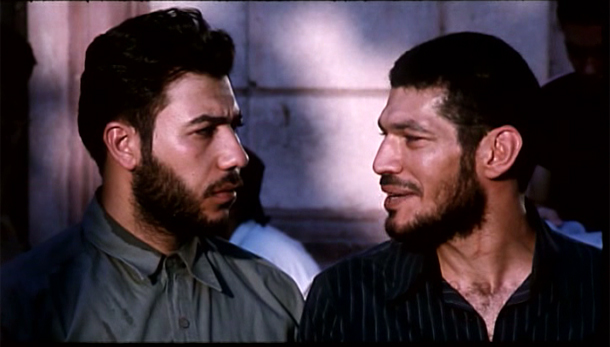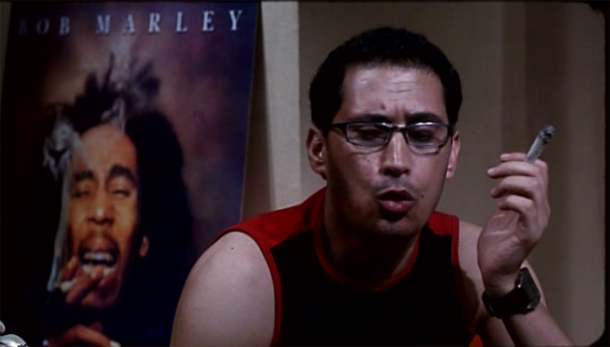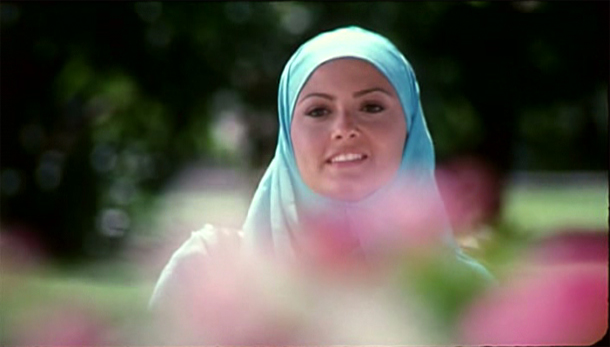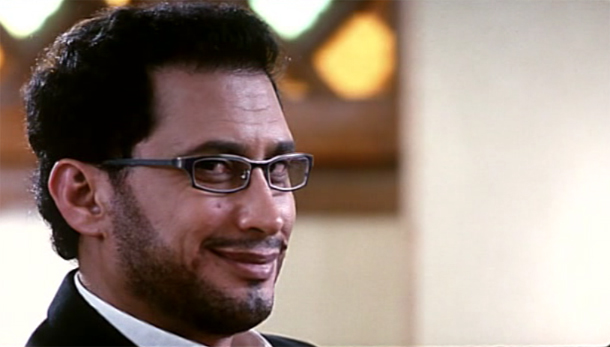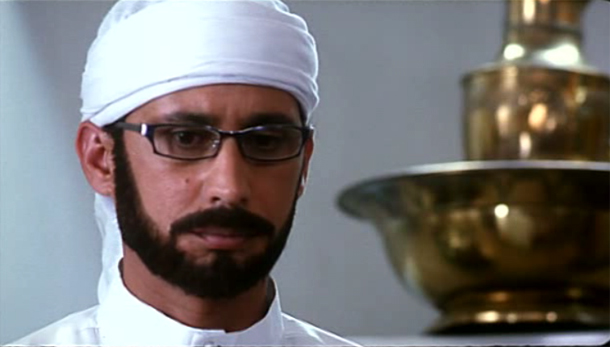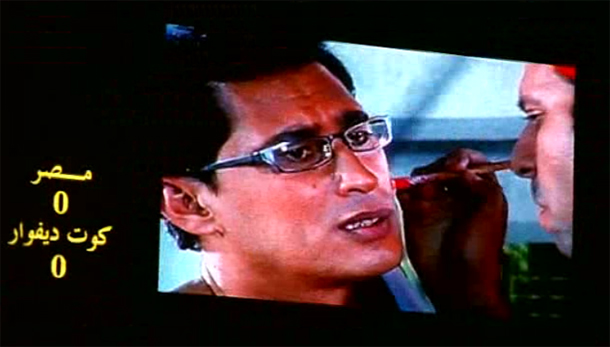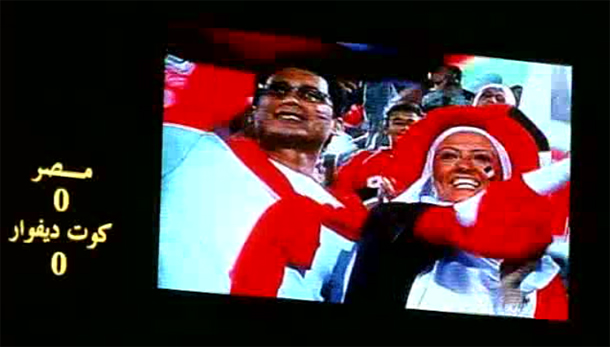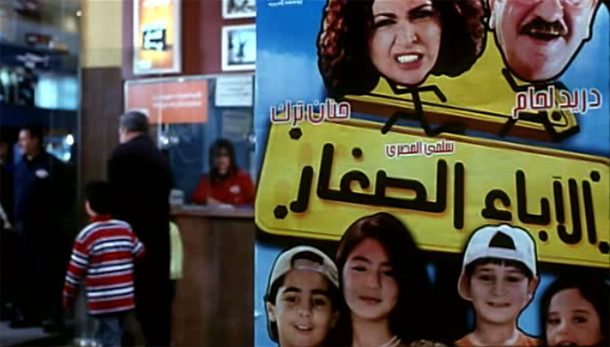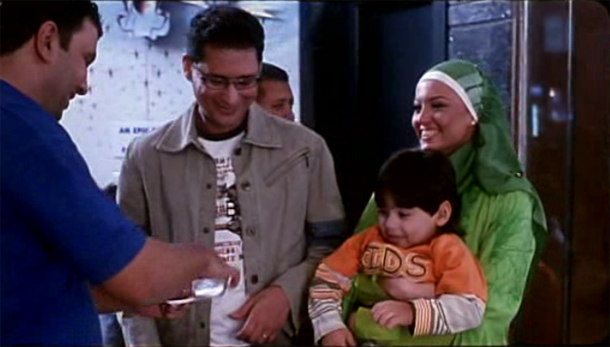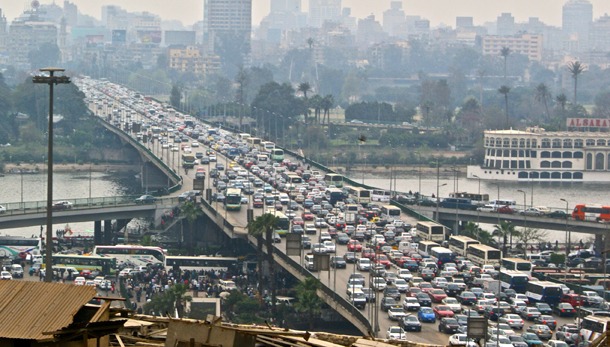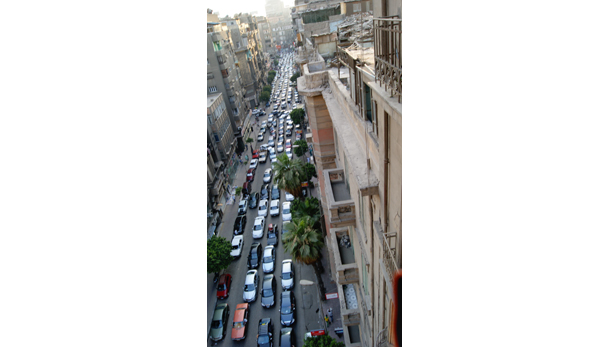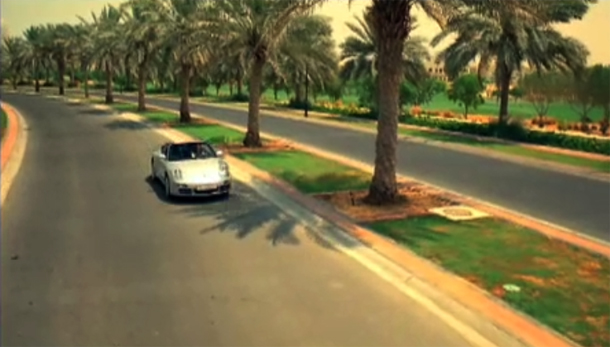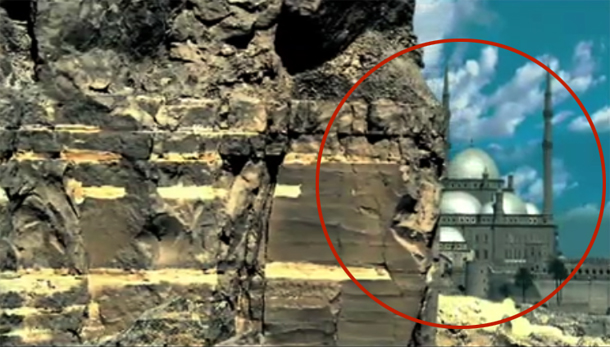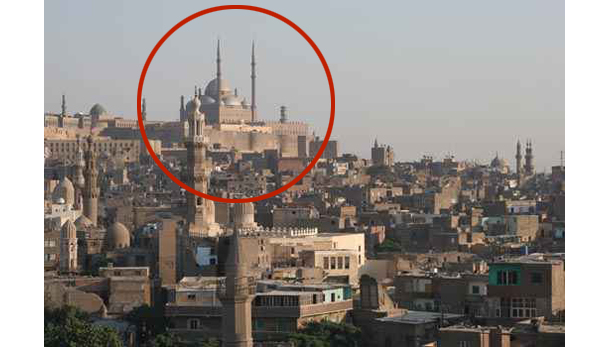Neoliberalizing People and Places in Egyptian Media[i]

Walter Armbrust
University of Oxford, Faculty of Oriental Studies
How are people and locations represented in Egyptian mass-mediated visual culture? How have current conventions for representing people and places changed over time? This paper focuses on a film, Ana Mish Ma‘ahum (I Am Not with Them, 2007), which contrasts sharply with a set of visual codes that were salient since the early 1970s for depicting (or more to the point, for eliding) Islamically marked people and urban places. These codes were repeated across a broad swath of audiovisual media—not just cinema, but also much of what was broadcast on television and even in print media.
In the past decade, Egyptian media conventions for representing people and locations have been altered significantly, first by the advent of transnational broadcasting and the internet, and secondly by increasingly insistent links to the politics of neoliberalism. My paper examines a tension evident in I Am Not with Them and other similar productions between, on one hand, the neoliberalization of Islam, and on the other hand, agendas for infusing Islamic ethics into neoliberalism.
As you might guess from Figure 1, the film is a light comedy—a boy-meets-girl story. All of the publicity for the film, including printed material, television ads, and a music video that was broadcast in conjunction with its release, suggest that the protagonists are a couple of modern youth who look like the state wants young people to look, namely, like more or less secular national subjects.
The publicity was deceptive. Certainly the film was a love story, but the central issue in the narrative was how people mark themselves Islamically and what it means for their relations with each other and with society. The main character in the film is ‘Amr, a medical-school student who is essentially a caricature of what a secularist would look like to an earnestly pious person. He constantly smokes hashish, drinks, womanizes, and is in every way out of control.
The love interest is Farah. [Figure 1] She is also a medical school student, and she is a secularist’s caricature of what an Islamist would be like: obsessed with morality, stiff, and a political activist in dubious causes that she herself may not fully understand. She also happens to be beautiful. Early in the film, ‘Amr sees Farah on the college campus and falls head-over-heels in love with her. The problem is that he’s a good-for-nothing rich kid constantly partying with his equally feckless friends, and Farah is widely known as an Islamist. In public what sorts them into social categories are the choices they make about how to present themselves. Farah’s hijab declares her commitments, or so the film would have us believe. Muhajjabat are always treated in film and television—and in most mass-mediated visual representation—as a marked social category, the unmarked category being “secular” Egyptians. So if you see a hijab in mass media, you can usually be sure that the point of the narrative is to say something about it. It isn’t just there; it demands explanation.
Of course the mere marking of categories is only an entry point into an analysis of what people actually convey with their public appearance. In real life the hijab is an element used performatively in constructing subtle social hierarchies that join with gender, class, age, and all the intricate calculations a person uses to project a persona in public. As a substantial corpus of academic literature has documented, considerable contrast and variation can be expressed through the hijab. It may be nominally a marker of piety, but aside from that it may tell the members of a woman’s society as much or as little about her as the quality of a man’s trousers or shoes communicate about their wearer.
I mean to emphasize nominal. Islamically marked bodies are ubiquitous in Egyptian society. We might think of such markings as diacritics, or “marks used to distinguish,” in the performance of the self—in other words, to distinguish selves from others in a social field. Prominent diacritics in contemporary Egyptian society are the neo-Islamic headscarf (hijab) for women—but also a wider range of “modest” clothes worn in increasingly diverse ways—and for men, beards and prayer marks on the forehead. Diacritics can also consist of bodily dispositions (i.e., deferential body language that can convey modesty aside from any elements of dress) and linguistic registers. Of course religion is only one social characteristic that can be conveyed indexically. Class, seniority, education, and “modernity” are others.
If diacritics index selves in a social field, then in the context of politically contentious diacritics such as Islamic dress, they put the analytical focus not on “what things are” but on “how things are”—how they’re made meaningful, by whom, and for what social purpose. Anyone who has been to a Middle Eastern country in the last decade is surely aware that a hijab does not always obliterate the female body, nor does it obscure class and power, nor is it unambiguously evidence of a personal choice as opposed to submission to peer, family, or government pressure. Hence I also want to emphasize that there is a very sharp disjunction between the subtle social performance of hijab in real life and the way it is presented in almost all mass-mediated visual representation of Egyptian society. Historically, films, television, and most printed media convey a world in which Islamically marked people are simply pious, and narratives must explain something about piety. This is very much the case in Ana Mish Ma‘ahum, though unlike most films it goes to some length to explore the personalities of the people who have chosen to mark themselves as pious.
Ana Mish Ma‘ahum is not about just Islamically marked women; it is just as much about men. The markers of piety on men in the film are beards, white gallabiyyas, and the zabiba—the “prayer bump” that many Egyptian men cultivate on their foreheads. [Figure 2]
In the course of the film ‘Amr transforms from a hashish-loving party boy into a seriously committed Muslim, and eventually into an out-and-out fanatic. Of course he does this to try to please Farah, with whom he eventually becomes acquainted and, as events proceed, engaged to marry. Since my main concern here is how the film depicts urban space, I will not dwell at length on the narratives. The crucial points are that the political commitment that goes along with the Islamic markings is eventually shown to be a trap for both Farah and ‘Amr. [Figure 3] Once their political idealism is shattered, they both lose their personal moorings completely. As ‘Amr turns into a hypermoralizing Islamist, Farah “goes secular.” They turn back into each others’ opposites, and can essentially no longer recognize each other [Figure 4]. They briefly break off the engagement, but then, with time, each of them moderates. Near the end of the film they each attend a football match separately. They see each other on the big stadium screen, realize that they’ve each changed, and of course it’s happily ever after.
The reduction of legitimate politics to nationalism is common in Egyptian films, and very much in line with the agenda of neoliberalism, which savagely suppresses all opposition, even if it comes in the form of student activism or democratic reform agendas that might lead to anything other than the sort of “market fundamentalism” that international economic organizations such as the IMF and World Bank have compelled states to adopt. In a nutshell, as long as Farah and ‘Amr obey the neoliberal state, they can have their Islamic lifestyle. [Figure 5]
The film has a postscript, showing them living happily ever after and having a son. Interestingly, the parting image is not of them praying together as a family, but of them going to see a movie—a “serious” movie called al-Aba’ al-Sughar (Young Fathers), by the Syrian filmmaker and actor Durayd Lahham. His costar in the film is Hanan Turk, an Egyptian actress who put on the hijab shortly after this film was made. [Figure 6]
The postscript is quite significant. Ana Mish Ma‘ahum enacts a long-running paternalistic discourse about the “problem of youth.” Should youth be secular national subjects or pious Islamic subjects? Should they work? Should they have fun? Most importantly, how should the older generation keep them from being drawn into political extremism? Ultimately the film shows youth staking out an independent position that is Islamic, but not Islamist. It turns out to be a problematic position, for reasons I’ll get to shortly. It is nonetheless an extremely interesting film. Bear in mind that until recently the Islamic trend, as it’s sometimes called, had no cultural program. Ana Mish Ma‘ahum connects with a new breed of Islamic preachers (or actually committed lay “missionaries,” known as al-du‘at al-gudaad) who regularly make pronouncements about the need for culture in a modern Islamic life. They include the well-known ‘Amr Khalid, who became prominent in the late 1990s, as well as even slicker du‘at, such as Mustafa Husni and Mu‘izz Mas‘ud.
The “new preachers,” as they are called, were initially stereotyped as “yuppies” who appeal primarily to the wealthy. This is a substantial oversimplification. However, it is true that ‘Amr Khalid and his clones can safely be thought of as products that have special appeal to the new suburbs. And in this connection, it must be said that the full impact of Ana Mish Ma‘ahum is not evident without a bit of further discussion of the ways that media define suburban space.
Ana Mish Ma‘ahum was set, and mostly filmed on location, in the newest suburbs of Cairo, far outside the urban location of modernity disseminated in countless mass-mediated narratives produced throughout most of the previous century. The locations chosen by the filmmakers are gated communities, which deliberately and firmly exclude the vast majority of the people who see Egyptian films.
The film’s suburban setting in itself was not unusual. A fairly large proportion of contemporary Egyptian cinema visualizes the same locations, as do television narratives and other forms of visual culture—everything from billboards to home-furnishing magazines. But Ana Mish Ma‘ahum introduces a new dynamic to these conventions—namely the pointed insertion of Islamically marked bodies, both male and female, into the narrative and into the space of suburban Cairo. The normative exclusion of Islamically marked bodies runs through all mediated visual culture responding to the new exclusionary urban space that has expanded rapidly since the mid-1990s, and through the “old” visual culture that constructed urban (or more precisely, urbane) Cairo as the center of Egyptian modernity.
In mass-mediated visual culture produced before the mid-1990s, Islamically marked bodies were conspicuous by their absence in an urban landscape that had, over the 1970s and 1980s, been filled with such people. But the urban locations most familiar to this Islamically marked audience were still the indispensable canvas of the filmmakers’ labor. In more recent productions Islamically marked people are no longer conspicuous by their absence because the city itself also disappears, or more precisely, the densely urban city that the vast majority of Cairenes live in is replaced by locations in gated communities that only a few Cairenes live in and most will never see other than in mass-mediated representations.
The best way to illustrate this briefly is with a short video (Watch in new window). This is not from a film, but rather a television advertisement for a new development called “Uptown Cairo.” It is the project of Egyptian billionaire Shafiq Gabr in partnership with the Dubai-based development company Emaar Investments. It will strike many as odd to contrast a film with an advertisement. The point is to emphasize the degree to which the production ownership of all mediated visual representations interpenetrates each other. The style of Ana Mish Ma‘ahum and many other recent films borrows heavily from the visual conventions of video clips. The entire genre of video clips is in essence an advertising platform for mobile phone companies, and many of the tycoons who have interests in mobile phones and other telecommunications and media-related businesses are the very same tycoons who are currently building housing developments like Uptown Cairo. The new suburban spaces of Cairo are inaccessible to the masses, but represented to the masses in media venues that are strictly controlled by the neoliberal tycoons. If Ana Mish Ma‘ahum is unusual in that it inserts Islamically marked people into this space, then it must be emphasized that there are no films that construct these vast new cities being built on the edge of Cairo as in any sense politically, economically, or environmentally problematic, even though vast sums of the state’s resources have been diverted to provide their infrastructure.
In the context of such forms of representation, one way to understand the politics of marking bodies Islamically (or refusing to do so) in recent films is to assess Islamically marked people as an implicit element of socially constructed risk. Risk, as geographer Eric Denis puts it, is “a social and political construct that crystallizes, sorts, and normalizes dangers, fears, and anxieties that define and limit a given society.”[ii] In cities, risk “lies at the foundation of the designation of clandestine transients—those who do not have their place in the city and must be kept at a distance because they threaten its harmony.”[iii] Hence in the social calculus of mass-mediated visual culture, Islamically marked people implicitly are assigned to the “risk category” together with a range of elements that justify and naturalize decisions to move into the new socially restricted spheres of Cairo’s periphery. These elements of risk include such things as air pollution, poverty, dirt, and noise, as well as the omnibus concept of “the street.” [Figure 7]
“The street” can be understood in the generic sense of unruly and uncontrollable crowds, which Denis and others note is construed as risk in the implicit justifications of many gated communities across the globe. Egyptian inflections on “the street” include discourses about sexual harassment of women, and sometimes (in conversation, but not often in print or other media) complaints about public displays of piety such as extending mosque space into streets during prayer times or the wearing of deliberately anachronistic “Islamic” clothing. “The street” perhaps also deserves to be thought of in terms of the dialectics between those in cars and those without them. From the perspective of the driver (or indeed, the passenger in any motorized vehicle), Cairo is immensely choked and constricted—one of the worst places in the world to drive, and currently also one of the most dangerous, both for drivers and for pedestrians.
From the perspective of the non-driver, streets, in the literal sense, are where much life outside the home and workplace takes place. Movement without a vehicle is immeasurably more difficult precisely because of the ubiquitous presence of cars, both moving in almost all spaces where one might walk and parked on sidewalks, where one is nominally supposed to walk. In thirty years of coming and going from Egypt, I have rarely heard pedestrianism articulated as a social value; instead all practice and certainly most street planning at the state level points to facilitating the movement of automobile traffic. Hence “traffic” is spoken of almost exclusively as a barrier to the movement of cars, and as a form of risk for anyone in possession of personal automotive transportation.
Denis describes risk as an “ambivalent object” that enables both the establishment of the exclusionary gated communities mushrooming all around Cairo and the reappropriation of “ancestral myths” that give them a veneer of cultural authority.[iv] Islam as architectural heritage is one such “ancestral myth.” [Figure 8] But Islam worn or inscribed on the body is not, or at least not in mass-mediated visual culture. Social practice of course is violently at odds with mass-mediated representation: Islamic markings on the body are seen in real life very much as both modern and as reappropriations of heritage.
Ana Mish Ma‘ahum, by pointedly inserting Islamically marked bodies into the space from which mass-mediated visual cultures seeks to cleanse them, conjures dangerously (or perhaps crassly) with the very terms of risk that underpin the creation of gated communities on Cairo’s periphery.
Conclusion
My conclusions are provisional. Ultimately Ana Mish Ma‘ahum’s refusal of the normative visual conventions for representing Islamically marked subjects in mass media leaves us with a set of problems. One is neoliberalism. Is the film evidence that Islam is ripe to be neoliberalized? In other words, the film suggests that religion can be packaged as personal choice, and as soon as that happens it can be set into the logic of “free markets.” Or, on the other hand, is the film the vanguard of an ethical infusion into the heart of the neoliberal stronghold?
It is doubtful that this narrative could have functioned very well if it had not been set in such an opulent milieu. Arriving at the conclusion that religion should be a personal choice among other possibilities is much easier when all of one’s material desires are also strictly a matter of choice. What this film does is in a sense like a laboratory experiment: what would piety be like if we could control for all other social and material factors?
Of course real people have to grapple with the traffic, they have to deal with relatives and neighbors who impose their moral will, they have to do whatever it takes to get a job or jobs that provide enough income to get by, and they have to deal with dysfunctional state schools and medical services. In real life, “choosing a lifestyle” from a menu of options just doesn’t happen. At the same time, even allowing for a certain discounting of the film on account of its unreal setting, it must still be acknowledged that it does something very different than almost all other visual media. Move around Cairo—the “new” one or the “old”—and one will be surrounded by people who have marked themselves in specific ways, and most conspicuously in Islamic ways. Look at Egyptian media, everything from billboards to musalsals, and it is totally different. Despite the unreality of the film’s setting, it is, on other grounds, one of the most bluntly realistic films of the past three decades.
Select Bibliography:
Armbrust, Walter. “Islamically Marked Bodies and Urban Space in Two Egyptian Films.” In Material Religion 8 (3), 2012: 354–73.
Armbrust, Walter. “Political Films in Contemporary Egypt.” In Film and Politics in the Middle East and North Africa: Creative Dissidence, edited by Josef Gugler. Austin: University of Texas Press, 2011a: 228–51.
Armbrust, Walter. “The Revolution against Neoliberalism.” In Jadaliyya (February 23, 2011b). jadaliyya.com/pages/index/717/the-revolution-against-neoliberalism.
Denis, Eric. “Cairo as Neoliberal Capital? From Walled City to Gated Communities.” In Cairo Cosmopolitan: Politics, Culture, and Urban Space in the New Globalized Middle East, edited by Dianne Singerman and Paul Ammar. Cairo: American University in Cairo Press, 2006: 47–71.
Harvey, David. A Brief History of Neoliberalism. New York: Oxford University Press, 2005.
Mitchell, Timothy. Rule of Experts: Egypt, Techno-Politics, Modernity. Berkeley: University of California Press, 2002.
Singerman, Dianne, ed. Cairo Contested: Governance, Urban Space, and Global Modernity. Cairo: American University in Cairo Press, 2009.
Singerman, Dianne, and Paul Amar, eds. Cairo Cosmopolitan: World Capital of Myths and Movements. Cairo: American University in Cairo Press, 2006.
[i] This paper was abstracted from a much longer text, and was written to be presented orally; hence it contains only one overt reference to a secondary academic source (Denis, 2006). For background reading relevant to this text, an article addressing similar themes to this paper (though not urbanism per se) is Armbrust 2012. On neoliberalism in general see Harvey (2005); and on neoliberalism in Egypt see Armbrust (2011b) and especially Mitchell (2002). Singerman (2009) and Singerman and Amar (2006) contain a wealth of insight on Cairo. Armbrust (2011a) provides background on Egyptian political cinema.
It must also be acknowledged that some of the logic of the social phenomena in question will change as a result of the January 25,2011, revolution. Some of the tenets of neoliberalism are now receiving a different level of scrutiny than was the case before the revolution. It is conceivable that some of the practices of self-presentation discussed here may also be revised in light of the revolution, and it is also possible that some elements of the censorship regime that shaped I Am Not with Them may be overturned. With these caveats duly expressed, I believe that most of the issues discussed here are still relevant in the post-revolution era.
[ii] Denis, Eric. 2006. “Cairo as Neoliberal Capital? From Walled City to Gated Communities.” In Cairo Cosmopolitan: Politics, Culture, and Urban Space in the New Globalized Middle East, edited by Dianne Singerman and Paul Ammar. Cairo: American University in Cairo Press, 2006: 51.
[iii] Ibid.
[iv] Ibid, 52.
Walter Armbrust is lecturer at the Faculty of Oriental Studies, University of Oxford. He has authored and edited books on mass media and popular culture of the Middle East and history of new media in the Middle East. He is currently writing a book on the January 25th Revolution provisionally titled A Symbolic Revolution: The January 25th Revolution as Social Drama.
"Cinematic Urbanism" is an online component of Ars Orientalis 42, published October 2012.





